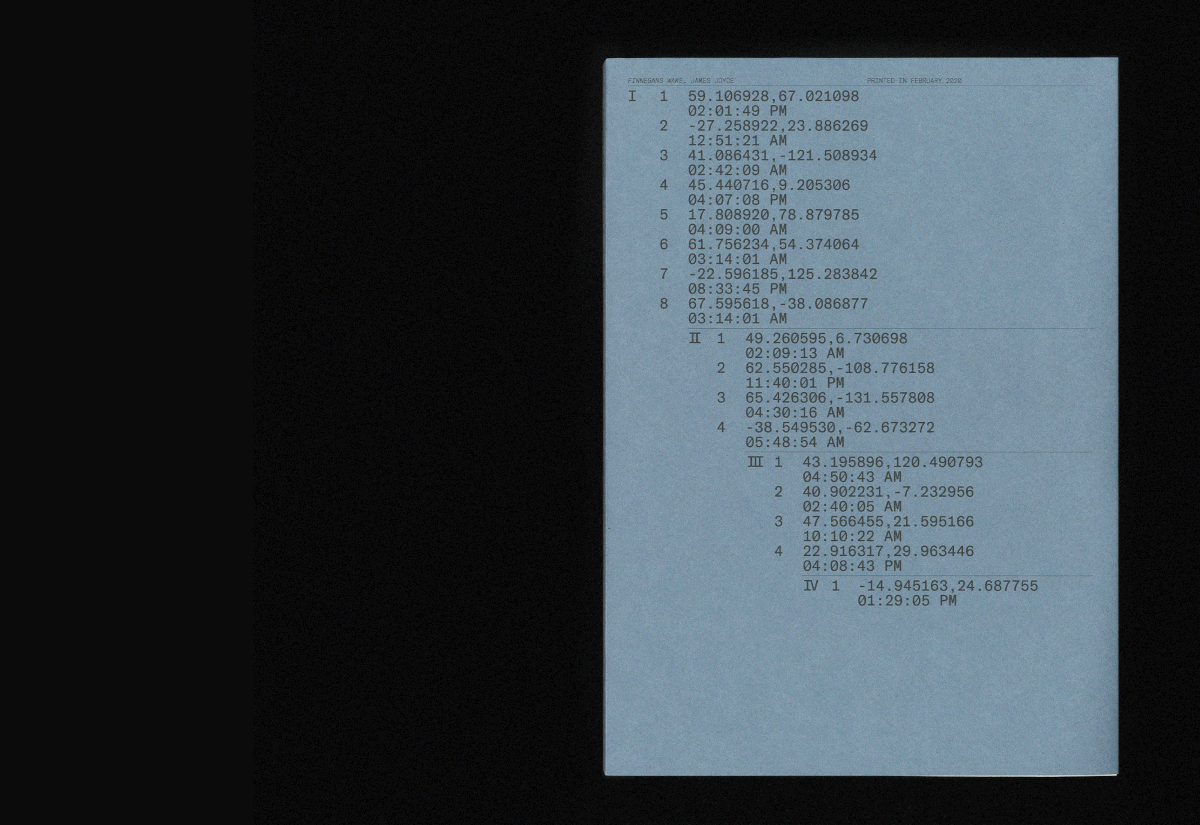
















Finnegans Wake
James Joyce
EN
In his latest novel, James Joyce writes about a dreamlike vision without a beginning or an end. The story is set in the village of Chapelizod, near Phoenix Park, on the suburbs of Dublin. The story, which is a dream of the main character, takes place entirely in one night.
The author's stream of consciousness becomes a dreamlike expression. Indeed, Joyce, by abolishing the typical grammatical and orthographic rules, creates a new language that cannot be translated, or, rather, which is available to an indefinite number of interpretations. The reader, dealing with obscure words, is part of a universe in which any subject is apparently identical but always different from himself.
The several and personal interpretations of the meaning of the words, which takes place in indefinite times and sets, lead back to the reader's oblivion. All the interpretations together compose a universal story: a cyclical text that defines itself uninterruptedly.
By modifying the form of the glyphs, the narrative is partially compromised in its understandability. This makes the reader having to deal with the signifier, something which leads to even more interpretations.
Furthermore, new meanings of the text appear in the space-time coordinates. The link space/time is found several times in paradoxical form in the text. These elements, capable of leading the reader back to a tangible space, are actually destabilizing. A cyclical disorientation reproduced in the creation of unique copies, book by book, page by page.
The darkness created by Joyce is not only a useful key for the reading of the text, which allows the unhinging of certain linguistic rules — adapting his lexicon to a dreamlike environment — but it is also necessary to transform the simple reading in an action of active participation to the story. This is how Finnegans Wake blurs the boundaries between translation and interpretation, general and particular, author and reader.
ITA
Nel suo ultimo romanzo, James Joyce scrive di una visione onirica senza inizio né fine. Il racconto è ambientato nel villaggio di Chapelizod, accanto a Phoenix Park, nella periferia di Dublino, e si svolge interamente in una notte all’interno del sogno del protagonista.
Il flusso di coscienza dell’autore diviene espressione onirica: Joyce, abolendo le consuetudini grammaticali e ortografiche, crea un nuovo linguaggio intraducibile, o meglio infinitamente interpretabile. Il lettore, davanti a parole oscure, è parte di un universo in cui si è apparentemente identici ma sempre differenti da sé.
Il significato molteplice e soggettivo delle parole, in tempi e luoghi indefiniti, riconducono all’oblio del lettore. La somma delle interpretazioni compone una storia universale: un testo ciclico che si definisce ininterrottamente.
Con un’azione di modifica sulla forma dei glifi, la narrazione viene compromessa in parte nella sua leggibilità. Ciò porta il lettore a doversi confrontare con il significante, decifrando di conseguenza nuovi significati.
Ancora, nuove espressioni del testo si manifestano nelle coordinate spazio temporali. La coppia luogo-istante si trova più volte in forma paradossale nel volume; questi elementi, in grado di ricondurre il lettore ad uno spazio tangibile, sono in realtà destabilizzanti. Uno spaesamento ciclico riprodotto nella generazione di copie uniche, libro per libro, pagina per pagina.
L’oscurità creata da Joyce non è solamente una chiave di lettura utile a scardinare certe fissità linguistiche — adattando il suo lessico ad un ambiente onirico — ma è anche necessaria a rendere la lettura un’azione di partecipazione attiva. Finnegans Wake sfuma così i contorni tra traduzione e interpretazione, generale e particolare, autore e lettore.
ISIA Urbino
MA Communication and Design for Publishing
Based on
Finnegans Wake
by James Joyce
Supervision
Davide Riboli
February 2020





